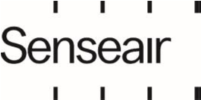

At the end of 2024, the MISO Consortium successfully conducted its first field test at the Azur Drones test field in Bordeaux, France (Figure 1). During this test, the MISO UAV-based observatory and MISO sensing technology, which utilizes NDIR gas sensing, were tested and validated in real-world conditions. The MISO UAV-based observatory, integrated with the NDIR sensor, has been customized and improved (e.g., precision landing system, waterproofing, and icing conditions), making it capable of operating in Arctic and wetland environments.
We’ve obtained some promising results! During the test campaign, we confirmed that the drone operates with two onboard sensors, one developed by NILU (LCS2) and the other by SENSEAIR (LCS1) (Figure 2), both working in manual and automatic modes. Most importantly, we verified that, using an artificial CH4 source, these low-cost devices can effectively detect CH4 during flight operations (Figure 3). Furthermore, the drone’s data acquisition firmware is capable of collecting, recording, and transmitting real-time data from both embedded sensors.










